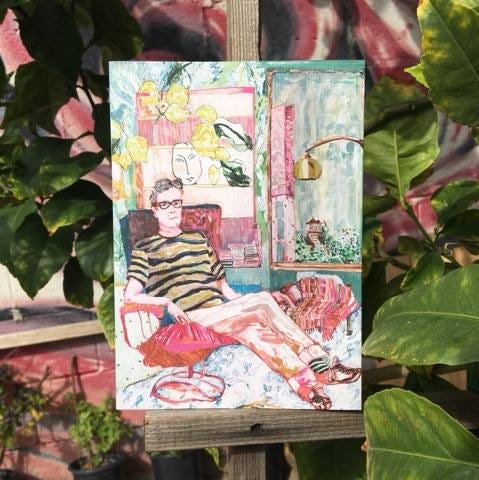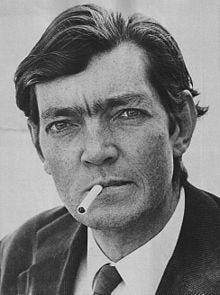I wrote a perfect book of poems called “The Plum in Mr. Blum’s Pudding” 31 years ago, and for the life (or death) of me, I can’t write another poem since then. The truth is the fact that it took me years to get to the point in writing that book, which didn’t take that long for me to write. Maybe in six months? I wrote most, if not all, while I was in Moji-Ko, Japan. What excites me about poetry is the intensity of both the practice and the form. It’s a snapshot of the world, where one doesn’t have to continue to worry about narration. All my early poems were in a sense the basis of the poetry in the Plum book. It didn’t happen, but I had to go through the process of writing every day in countless notebooks, to get to the point, where it made sense to me. It is equally odd that I had to leave my country to focus on my language. Which is precisely what happened when I was in Japan.
I couldn’t speak a word of Japanese, yet I made sure that I kept as far away as I can from the English language. The distance from my own language and country made me super aware of my limitations, which acted out as an inspiration for the Plum book. Yet, I did have a mass-market English dictionary, which also had a small atlas in the back of the book. With that as a guide, I plunge myself into writing “The Plum in Mr. Blum’s Pudding. ”
My most useful tool is my memory. The beauty of it is the fact that it doesn’t have to be a correct memory. In actually, I prefer the act of remembrance, and somehow get the facts wrong. Some years ago, I read Jules Romains’ “Donogoo Tonka or The Miracles of Science” which had a significant effect on me, due that the location of a city in South America was entirely made up by the author. For me, a writer needs to be bigger than life. When I was a teenager, I discovered Guillaume Apollinaire, because I like the fact that he was writing poetry in such a fashion, that was so ‘new. ' To honor him and his work, I tried to write a poem from my memory, but alas not having the book in Japan, I had to re-invent the work. A lot of my poems are really is my memory working to remember a piece of literature, or if it is something first-hand, such a conversation, then it is trying to remember what that person said. If I were a journalist, I would be a total disaster, but as a poet, every accident becomes a porthole to another world.
Collecting art to me is a form of writing poetry. Just not on paper. I was very impressed with Peggy Guggenheim because here is a woman who made her world, in her own fashion. Combining the artists and their work and having it contained in a location is a must. Art lives on no matter what, but with the focus of how one displays that work, and with another artist, it becomes a dialogue of sorts. Writing poetry works the same way for me. I choose words that hopefully will go together, not to make a specific sense, but actually to bring one’s imagination into focus. As much as possible I want to avoid the real world and what I want to do is make it into an artificial paradise. To mis-phrase Donald Rumsfeld: “There are things out there, that we do know, but it is the unknown we need to know, and what we know, is not really knowledge, but a slight misunderstanding on what we think we know. ”
When I saw the film “Blow Up” I was struck by how easy reality can be altered by another medium - for instance in that film, with the camera. Writing poetry serves the same purpose in that one is not recording what’s real, but what’s the subjective view of that world. With that in thought, I’m a free man.
Photo of book cover: Lacy Soto. Front Painting on cover: Alex Chaves. Inspiration by Jules Romains, Julio Cortázar, Guillaume Apollinaire, & Peggy Guggenheim,






